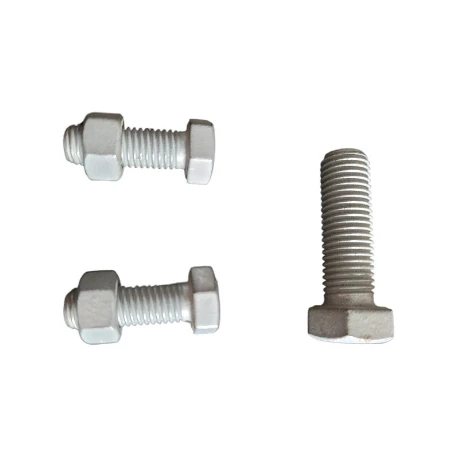

Understanding Hot Dip Galvanized Bolts and Nuts for Enhanced Corrosion Resistance and Durability
Oct . 21, 2024 04:49 Back to list
Understanding Hot Dip Galvanized Bolts and Nuts for Enhanced Corrosion Resistance and Durability
The Importance of Hot-Dip Galvanized Bolt and Nut in Modern Construction
In the world of construction and manufacturing, the choice of materials is crucial to ensure long-lasting and durable structures. One aspect of this choice revolves around the necessity for components that can withstand severe environmental conditions and corrosive elements. In this context, hot-dip galvanized bolts and nuts have emerged as preferred options due to their unique properties and benefits.
Hot-dip galvanization is a process that involves the coating of iron or steel with a layer of zinc to enhance corrosion resistance. The procedure starts by cleaning the metal surface, removing any contaminants, and then immersing the items in a bath of molten zinc. This results in a metallurgical bond between the steel and zinc, creating a thick, durable coating that is significantly thicker and more protective than other galvanizing methods, such as electro-galvanizing.
The Importance of Hot-Dip Galvanized Bolt and Nut in Modern Construction
In addition to corrosion resistance, hot-dip galvanized bolts and nuts also exhibit excellent mechanical properties. The zinc coating not only protects the steel underneath but also enhances its overall durability. These fasteners can handle heavy loads and resist wear, making them suitable for the demanding conditions typically present in construction and heavy industries. They are widely used in various applications, including residential buildings, bridges, highways, and marine structures.
hot dip galvanized bolt nut

Another aspect where hot-dip galvanized fasteners excel is in maintenance. Structures built with these robust components require less frequent inspections and repairs compared to those using uncoated or less-protective fasteners. This reduction in maintenance translates to lower overall lifecycle costs, which is an essential consideration for developers and project managers.
Environmental sustainability is also an increasingly important factor in construction and manufacturing. The hot-dip galvanization process is known for its low environmental impact. Zinc is a naturally occurring element, and the process itself generates minimal waste. Furthermore, galvanized steel components are 100% recyclable, contributing to a circular economy, which is vital in today’s environmentally-conscious society.
In many regions, the use of hot-dip galvanized bolts and nuts is also a regulatory requirement. Building codes and industry standards often mandate specific protective measures for fasteners used in certain applications, particularly those exposed to corrosive environments. Compliance with these regulations not only ensures safety and reliability but also enhances the reputation of contractors and manufacturers who prioritize quality and durability in their projects.
Finally, the aesthetics of hot-dip galvanized fasteners should not be overlooked. The distinctive finish of galvanized steel imparts a bright, shiny appearance that retains its luster even after exposure to the elements. This visual appeal makes hot-dip galvanized bolts and nuts suitable for applications where appearance and aesthetics matter, such as architectural structures and decorative installations.
In conclusion, hot-dip galvanized bolts and nuts represent an essential component in modern construction and manufacturing. Their unmatched corrosion resistance, mechanical strength, low maintenance requirements, and environmental benefits make them an ideal choice for a wide range of applications. As industries continue to evolve and face new challenges, the utilization of hot-dip galvanized fasteners offers a reliable solution that meets the demands of durability, safety, and sustainability. For engineers, architects, and builders looking to create lasting structures, the choice of hot-dip galvanized bolts and nuts is not just practical; it is a strategic decision that will pay off in the long term.
Latest news
-
High-Strength Hot Dip Galvanized Bolts - Hebei Longze | Corrosion Resistance, Customization
NewsJul.30,2025
-
Hot Dip Galvanized Bolts-Hebei Longze|Corrosion Resistance&High Strength
NewsJul.30,2025
-
High-Strength Hot-Dip Galvanized Bolts-Hebei Longze|Corrosion Resistance&High Strength
NewsJul.30,2025
-
Hot Dip Galvanized Bolts-Hebei Longze|Corrosion Resistance&High Strength
NewsJul.30,2025
-
Hot Dip Galvanized Bolts - Hebei Longze | Corrosion Resistance, High Strength
NewsJul.30,2025
-
High-Strength Hot Dip Galvanized Bolts-Hebei Longze|Corrosion Resistance, Grade 8.8
NewsJul.30,2025

